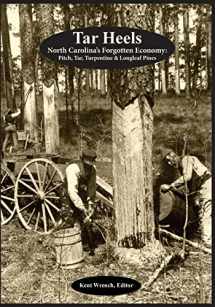
Tar Heels: North Carolina's Forgotton Economy: Pitch, Tar, Turpentine & Longleaf Pines
Book details
Summary
Description
North Carolina acquired the nickname, “the Tar Heel State” due to its relationship with tar, pitch and turpentine. The occupation was considered a demeaning occupation by the early colonies; we continued to be viewed negatively throughout the antebellum period. The longleaf pine belt extended from eastern North Carolina to east Texas. The tall straight longleaf trees stirred the spirits of the Native Americans and early settlers alike. If we could view this forest we too would fall under its spell of wonder and reverence. The products of the longleaf forest were known as “naval stores.” The wooden hull shipbuilding industry of Europe depended on pitch, tar and timber in the construction of their huge fleets of war and merchant ships. England and much of Europe had devastated their timber resources. England turned its focus toward the colonies and the colony of North Carolina had a most abundant supply of naval stores; with a ready market in Europe, it became our cash crop. The vast quantities of this resource made the lives of our fathers much easier. They built homes, split rails for fences, heated homes, cooked meals and read by light of its flame. The cradle, the coffin and lastly the grave markers were all fashioned from the heartwood of the longleaf pine. This volume, with many images that have almost disappeared from our world will give insight to this past lifestyle of our ancestors. The pine forest had been considered to have no value except for the tar, turpentine, rosin, and lumber which it produced. A man could do as he pleased with the pine trees and neither his conscience, the voice of his neighbors, nor the law of the state could say him nay. As a result, the old growth virgin longleaf pine forest was devastated, but the nickname “Tar Heel” had taken deep roots.


We would LOVE it if you could help us and other readers by reviewing the book
Book review



